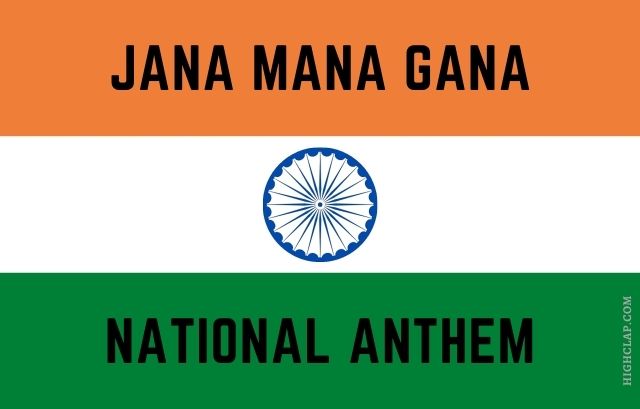Independence Day stands as a poignant tribute to India’s triumphant struggle for freedom and a solemn occasion to honor the unwavering determination of countless freedom fighters. They have made profound sacrifices to liberate the nation from the shackles of British colonial rule. On 15 August 1947, India got the chance to celebrate its 1st Independence Day.
As India fervently prepares to commemorate its 77th Independence Day on August 15, a tapestry of captivating facts unveils the lesser-known facets of this historic event.
Lesser Known Facts About The Indian Independence Day
National Anthem Was Absent at that time
During the zenith of India’s independence movement, a national anthem was conspicuously absent. It was the creative genius of Rabindranath Tagore that gave birth to “Jana Gana Mana” in 1911. Yet, it was not until January 24, 1950, that this soul-stirring composition was formally embraced as the nation’s anthem.
Mahatma Gandhi ji Was not a Part of Celebrations

Intriguingly, Mahatma Gandhi chose not to partake in the jubilation of Indian Independence Day celebrations in Delhi. Instead, he embarked on a solemn hunger strike in Kolkata, striving to quell the torrents of bloodshed that had ensued due to the painful partition.
Fate guided the timeline of India’s freedom
A subtle twist of fate guided the timeline of India’s independence. Lord Mountbatten, entrusted by the British Parliament to oversee the transfer of power, originally held a mandate to effectuate this transfer by June 30, 1948. Remarkably, he accelerated this pivotal transition to August 15, 1947, aligning with the second anniversary of Japan’s capitulation to the Allied forces.
Hindi Language Got Its Unequivocal Official Standing Quite Late
Language, a cornerstone of identity, played a decisive role in post-independence India. September 14, 1949, engraved itself as a pivotal day when Hindi was officially embraced as the language of the Union of India. Further crystallizing this linguistic trajectory, the Constitution of India enshrined Hindi in the Devanagari script as the unequivocal official language in 1950.
August 14 Was Designated As The Auspicious Day
The Indian Independence Bill extended the promise of freedom to both India and Pakistan on August 15. However, an astute decision by Mountbatten saw August 14 designated as the auspicious date for the ceremonial transfer of power to Pakistan, affording him the opportunity to grace the ceremonies in both nations.
Vande Mataram Was Made Before National Anthem
A symphony of patriotism found its voice in “Vande Mataram,” India’s national song. Composed by the literary maestro Bankim Chandra Chatterjee as part of his novel “Anandamath” in 1882, while ‘Jana Gana Mana’ originally composed in Bengali by India’s first Nobel laureate Rabindranath Tagore on 11 December 1911. Both resounding ode to the motherland was formally adapted as India’s national song and national anthem on January 24, 1950, a testament to its enduring significance.
Harmonious Echoes of Independence Day of India: Significance of India’s National Anthem and National Song

India’s Independence Day, celebrated on August 15th, marks the triumph of a long and arduous struggle against colonial rule. As the nation basks in the spirit of freedom, two emblematic compositions stand tall, echoing the aspirations and unity of a diverse nation – the National Anthem, “Jana Gana Mana,” and the National Song, “Vande Mataram.” These musical masterpieces are more than mere lyrics; they encapsulate the essence of India’s journey to freedom and its enduring commitment to unity, diversity, and patriotism.
National Anthem: Jana Gana Mana
“Jana Gana Mana Adhinayaka Jaya He…” – these opening words of Rabindranath Tagore’s masterpiece “Jana Gana Mana” resonate deeply with every Indian heart. Composed in Bengali, it was first sung during the Indian National Congress session in 1911, and later, on January 24, 1950, it was officially adopted as the National Anthem of India. The anthem’s significance extends beyond its musical and lyrical prowess; it reflects the nation’s diverse cultural tapestry and shared identity.
The choice of “Jana Gana Mana” as the National Anthem was deliberate. Its inclusive lyrics encompass the nation’s rich heterogeneity, representing India’s multi-lingual, multi-religious, and multi-cultural population. Tagore’s poetic brilliance beautifully captures the aspiration for unity while celebrating the distinctiveness of every region. The anthem acts as a unifying force, bringing together millions in a collective rendition that transcends geographical and linguistic boundaries.
National Song: Vande Mataram
“Vande Mataram Sujalam Suphalam…” – these words of Bankim Chandra Chattopadhyay’s magnum opus “Vande Mataram” evoke a sense of reverence, pride, and sacrifice. Written in Sanskritized Bengali, the song first appeared in his novel “Anandamath” in 1882. “Vande Mataram” became a rallying cry during India’s struggle for independence, symbolizing the deep-seated love and devotion Indians held for their motherland.

The song’s lyrical splendor paints a vivid picture of India’s landscapes, culture, and heritage. It reverberates with the ethos of selfless dedication to the nation, an attribute that defined the freedom fighters who fought tirelessly for India’s liberation. “Vande Mataram” served as an inspiration, igniting the flame of patriotism and motivating countless individuals to join the cause.
Significance and Unity
The National Anthem and National Song hold immense significance in fostering a sense of unity and shared identity among Indians. These compositions remind citizens of the sacrifices made by their forefathers and the resilience displayed during the struggle for independence. By singing the National Anthem and reciting the National Song, people not only pay homage to the heroes of the past but also reaffirm their commitment to upholding the ideals of freedom, justice, and equality.
Moreover, the National Anthem and National Song serve as unifying threads connecting the diverse fabric of India. Regardless of language, religion, caste, or creed, these compositions encapsulate the collective consciousness of the nation. They are a reminder that India’s strength lies in its unity amid diversity, fostering a sense of belonging that transcends individual differences.
As we immerse ourselves in the jubilant spirit of Independence Day, these nuggets of history offer a glimpse into the intricate tapestry of India’s struggle and its profound journey toward self-determination.